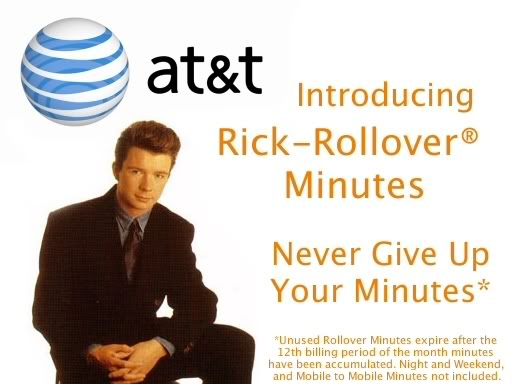· solar energy · 5 min read
Solar Simplified- A Flip Phone Throwback
Understanding solar energy might seem as daunting as mastering texting on a flip phone, but with patience and perseverance, you can unlock its full potential.

In our previous article, we took you on a journey of understanding solar panel placement optimization, comparing it to the art of sunbathing. Now, let’s dive deeper into the world of solar energy. It’s a bit like trying to text on a flip phone - a tad more complex than today’s smartphone era, but once you understand the basics, it’s a game-changer. This article will transport you back to the flip phone era to simplify the intricate concepts of solar energy, battery storage, net metering, and time-of-use rate plans.
TOU Rates: The Evening and Weekend Minutes
Remember the days when each call used your precious pool of monthly minutes, and calls made during peak hours consumed more of those minutes? The strategy then was to save non-urgent calls for evenings or weekends when rates were cheaper. This scenario is strikingly similar to Time-of-use rates (TOU) in the energy world.
TOU rates fluctuate depending on the time of day, with electricity often being more expensive during peak usage times, typically between 4 PM and 9 PM on weekdays. Unlike the phone analogy where evenings and weekends were cheaper, peak demand for energy often occurs when people return home from work and start using appliances. By being aware of TOU rates and adjusting your energy usage accordingly, you can achieve significant savings.
More importantly, here’s where solar storage comes into play. By storing excess solar energy produced during the day, you can use it during peak demand times, avoiding higher electricity costs. It’s like having a reserve of minutes to use when regular call rates are high.
If you want to check your enrollment in TOU rates and understand the difference in those rates, you can access your energy data through your utility provider’s dedicated app or website. Compare the amount of energy used (measured in kWh) with the corresponding price differences during various times of the day, or you can visit the Department of Energy’s guide to Time Variable pricing to see what programs your utility provider offers.
By mastering TOU rates and strategically using solar storage, you can optimize your energy usage and save money on your energy bills. To learn more check out our article on mastering TOU rates.
Net Metering: The Rollover Plan
Remember when some cell phone plans offered rollover minutes? If you didn’t use all your minutes in a month, they would roll over to the next month, ensuring that nothing went to waste. You did not want to give up those minutes! Similarly, in the world of solar energy, there’s a concept called net metering.
With net metering, if your solar panels produce more energy than you use in a given month, the excess energy isn’t wasted. Instead, it’s “rolled over” as credits to your next month’s energy bill. Think of it as a bank account for your solar energy, where you can deposit excess energy and withdraw it when needed.

This mechanism allows you to balance out your energy production and consumption over time, leading to significant savings on your energy bills. It’s a smart way to make the most of your solar investment, ensuring that every kilowatt-hour produced by your solar system is put to good use.
Battery Storage: The Prepaid Phone Card
Remember the days of prepaid phone cards? You’d buy a card with a set number of minutes, carefully calculating how many you had left and deciding when to use them. It was a way to have control over your calling expenses and ensure you had a reserve for emergencies or important calls.
This concept is strikingly similar to battery storage in the world of solar energy. When your solar panels produce more energy than you can use, that excess energy doesn’t have to go to waste. Instead, you can store it in batteries for later use, just like saving those prepaid minutes.
Battery storage is particularly useful during power outages or during peak usage times when electricity costs more. By tapping into your stored energy, you can avoid higher electricity rates, much like using a prepaid card to save on expensive calls.
Like the safety net of a prepaid card, battery storage offers a sense of energy security and control. It’s a way to make the most of your solar energy production, ensuring that every bit of energy is utilized efficiently.
For more on battery storage and how it can enhance your solar energy system, visit Home Energy Storage.
The Leap from Flip Phones to Solar Homes
Just as our mobile phones have progressed from bulky flip phones to today’s sleek smartphones, solar technology has also witnessed an astounding evolution. Early photovoltaic cells were cumbersome and inefficient, but with continuous innovation, today’s solar panels are highly efficient, compact, and adaptable to various needs. The introduction of intelligent micro-inverters, solar tracking systems, and solar storage batteries mirrors our leap from simple call-and-text mobiles to multi-functional smartphones. As solar technology continues to advance, it only enhances the relevance and importance of understanding concepts like battery storage, net metering, and TOU rates.
Conclusion
Just as mobile phones evolved from bulky flip phones to sleek smartphones, solar technology has undergone a remarkable transformation. Early photovoltaic cells were cumbersome, but today’s solar panels are efficient, compact, and adaptable, mirroring our leap from simple call-and-text devices to multi-functional gadgets.
Understanding solar energy might seem as daunting as mastering texting on a flip phone, but with patience and perseverance, you can unlock its full potential. The innovations in solar technology, such as intelligent micro-inverters and solar storage batteries, enhance our ability to harness renewable energy and underscore the importance of concepts like battery storage, net metering, and Time-of-use (TOU) rates.
Now that you’ve got the basics down, You can either Learn more about net metering here. Or maybe you’re ready to dive into devising a solar offset strategy?.